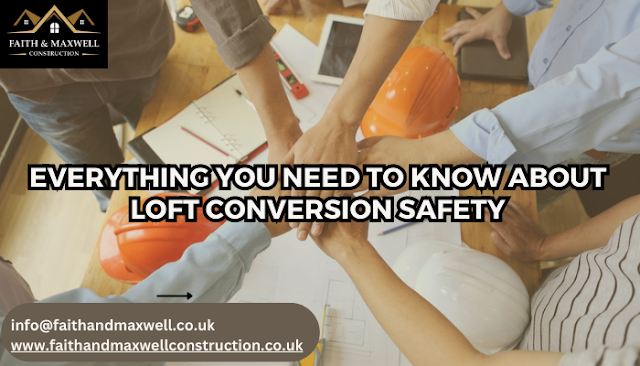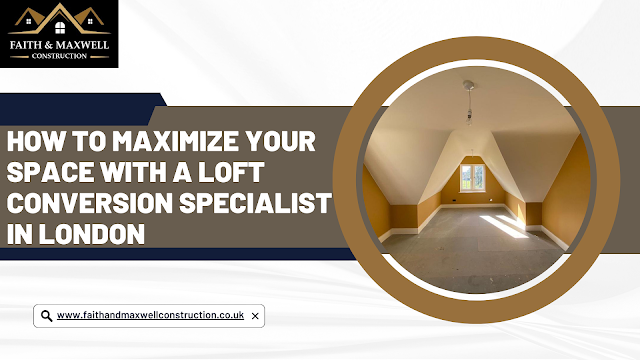Everything You Need To Know About Loft Conversion Safety
Everything You Need To Know About Loft Conversion Safety
Loft conversions are a great way to add extra living space to your home, but they also come with a number of safety considerations that need to be taken into account. In this blog post, we'll cover everything you need to know about loft conversion safety.
- Fire Safety
One of the main concerns when it comes to loft conversions specialist is fire safety. The following measures can help you ensure your loft is safe from fires:
- Install smoke detectors: Make sure your loft is fitted with a working smoke detector. Test it regularly and change the batteries once a year.
- Fire doors: Install fire doors to all rooms leading into the loft space. These doors should be able to resist fire for a minimum of 30 minutes.
- Escape routes: Ensure there is a clear escape route from the loft space to the outside of the house, in case of a fire.
- Structural Safety
It is essential that the structural integrity of the property is not compromised when converting the loft. Here are some important points to consider:
- Check the existing structure: Before starting any work, it's important to have a structural engineer inspect the existing structure to ensure it can support the additional weight of the conversion.
- Install the right supports: Be sure to install the right supports, such as beams and joists, to support the weight of the conversion. This is important for both the floor and the roof.
- Follow building codes: Ensure that all work meets the relevant building codes and regulations.
- Electrical Safety
Electrical safety is another important aspect to consider when it comes to loft conversions. Here are some points to keep in mind:
- Hire a qualified electrician: Always hire a qualified electrician to carry out any electrical work in the loft.
- Use the right materials: Use materials that are appropriate for use in loft conversions, such as fire-resistant cables.
- Ensure proper ventilation: Ensure that there is proper ventilation in the loft space to prevent the buildup of heat and moisture.
- Access Safety
The access to the loft space should also be safe and secure. Here are some points to keep in mind:
- Use proper stairs: Use proper stairs to access the loft, rather than ladders or makeshift solutions.
- Install handrails: Install handrails along the stairs to help prevent falls.
- Ensure adequate lighting: Ensure that there is adequate lighting in the loft and on the stairs to help prevent accidents.
Here are a few additional safety considerations to keep in mind when converting your loft:
- Insulation Safety
Insulation is a crucial part of any loft conversion, but it's important to choose the right type of insulation and ensure it's installed correctly. Here are some points to consider:
- Use fire-resistant insulation: Use insulation that is fire-resistant and meets the relevant building codes and regulations.
- Ensure proper ventilation: Ensure that there is proper ventilation in the loft space to prevent the buildup of moisture and condensation, which can damage the insulation and compromise its effectiveness.
- Leave adequate clearance around electrical fixtures: Ensure that there is adequate clearance around electrical fixtures, such as light fixtures and sockets, to prevent the insulation from coming into contact with them and potentially causing a fire.
- Window Safety
Windows are an important aspect of any loft conversion, providing natural light and ventilation. However, they can also pose a safety risk if not installed or maintained properly. Here are some points to consider:
- Use safety glass: Use safety glass for windows to help prevent injuries in case of breakage.
- Ensure proper installation: Ensure that windows are properly installed and sealed to prevent drafts and leaks.
- Install window restrictors: Install window restrictors to prevent them from opening too far, which can be dangerous, especially if the loft is used as a bedroom.
- Pest Control
Loft conversions can sometimes attract unwanted pests, such as rodents and insects. Here are some points to consider:
- Seal entry points: Seal any entry points that pests may use to get into the loft, such as gaps around pipes and cables.
- Install mesh screens: Install mesh screens on any vents or openings to prevent pests from entering the loft space.
- Regular cleaning: Regularly clean the loft space to prevent the buildup of debris and food that can attract pests.
By keeping these safety considerations in mind, you can help ensure a safe and enjoyable living space in your loft conversion. Remember to always hire qualified professionals for any work that needs to be done and follow building codes and regulations to ensure your safety and compliance.
In conclusion, loft conversion companies in london can provide additional living space and add value to your home, but safety should always be a top priority. By following these safety guidelines, you can help ensure a safe and enjoyable living space for years to come.


Comments
Post a Comment